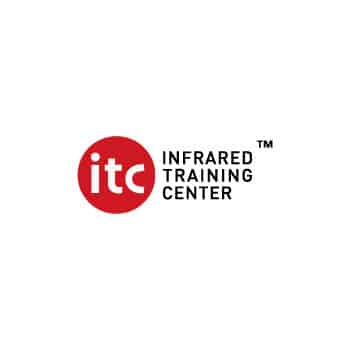Infrared Thermography Level 2
This course prepares you for qualification as a category 2 certified thermographer. You will learn about topics in infrared thermography to both deepen and broaden your knowledge about infrared physics, heat science, infrared measurement equipment and its application. As a Level 2 thermographer you shall provide guidance to category 1 personnel in the areas of equipment selection, techniques, limitations, data analysis, corrective actions and reporting.
This course prepares you for qualification as a category 2 certified thermographer. You will learn about topics in infrared thermography to both deepen and broaden your knowledge about infrared physics, heat science, infrared measurement equipment and its application. As a Level 2 thermographer you shall provide guidance to category 1 personnel in the areas of equipment selection, techniques, limitations, data analysis, corrective actions and reporting.
After a short introduction to certification levels and procedures, and related standards, you will take an initial test. During the course you will repeat and learn more about thermal science and heat transfer as well as gain advanced knowledge on IR theory and IR equipment. The course ends with a multiple choice exam.
The course includes advanced practical exercises and discussions about the participants’ professional experiences and cases from the field. Thermal and infrared science theory are taught by using formulas, diagrams, and graphs. The focus is on steady-state processes, but transient mechanisms are also included.
Through this Certification Course, participants have the opportunity to accrue 5 Continuing Professional Development (CPD) points.
- You will hold a valid Level 1 thermography certificate
- You will have the recommended experience within thermography according to relevant standards
- You will prepare a case study to be presented at the Level 2 course and submitted towards qualification at course closing.
Course Benefits
- Reinforce Level I infrared training concepts with refresher material covering the latest infrared camera, technology and thermal imaging application developments.
- Expand your thermography knowledge with new, more in-depth concepts in infrared theory, heat transfer and spatial resolution.
- Learn the basics of predictive maintenance thermography and overall infrared inspection program development.
- Learn to calculate avoided costs with Excel-based application software (included).
- Refine your image analysis and interpretation proficiency with in-depth thermal imaging survey and measurement techniques for predictive maintenance applications.
- Learn to measure emissivity of common materials.
- Improve your thermal analysis skills with more challenging laboratory and infrared field applications labs.
- The training course and exam follows the ISO 18436-7 Category 2 standards, and the ASNT SNT-TC-1A Level II standard.
- The course not only prepares the thermographer to carry out advanced thermal analyses and compile professional reports, it is also structured to prepare the delegate for the final examination on day five.
- The course is vendor neutral and delegates are encouraged to attend with any thermal camera.
- Fourier’s Law, Newton’s Law of Cooling
- Atmospheric transmission, Radiation reference sources
- Planck’s Law, Wien’s Law, Emissivity, and factors affecting emissivity
- Infrared camera selection criteria, Spectral bands, Thermal sensitivity (NETD), Lens selection, Optical resolution, and Operation of equipment
- Image composition, Emissivity determination, Error source recognition, prevention or control, Waveband selection criteria
- Recognizing and dealing with radiation, convection, and conduction
- Effects of incorrect emissivity, Camera calibration and Environmental and operational conditions
- Temperature measurement, and Comparative quantitative and qualitative thermography
- Camera measurement tools, Measurement tools, Distance (atmospheric) correction, Emissivity correction
- Statistical analysis , Image subtraction, Image montage and Temperature trending
- General image interpretation guidelines, and General guidelines for establishing thermal severity assessment criteria
- Machinery engineering principles (components and construction)
- Typical machinery failure modes and mechanisms and their associated thermal signatures
- Severity assessment and acceptance criteria (engineering codes and standards)
- General principles, Technique selection, Measurement intervals
- Reference temperatures, and Baseline temperatures
- Procedure development
- Safety, Equipment and Procedure management
- Skills and competencies management
- Database management
- Managing corrective action implementation

Course Info
- Dates
- 07 Apr - 11 Apr 2025 (JHB) IR-C2-2
- 23 Jun - 27 Jun 2025 (JHB) IR-C2-6
- 29 Sep - 03 Oct 2025 (JHB) IR-C2-10
- 20 Oct - 24 Oct 2025 (KZN) IR-C2-11
- Locations
- Johannesburg
- KwaZulu-Natal
- Duration
- 5 Days
Course Length:
24 hours
License:
1 seat x 365 days*
